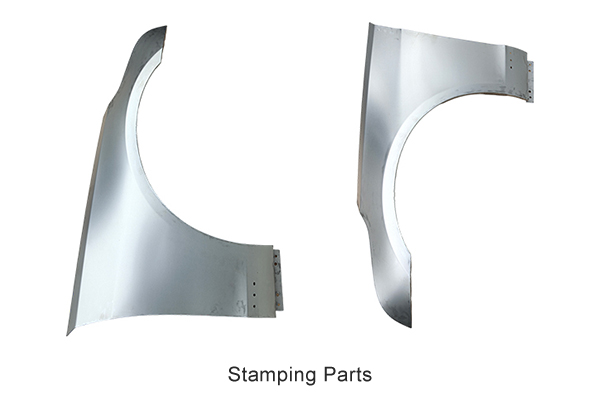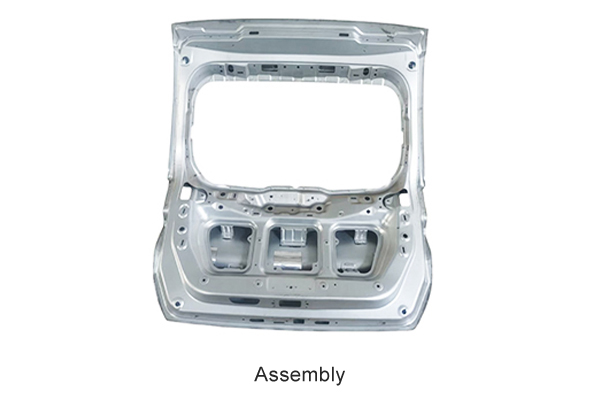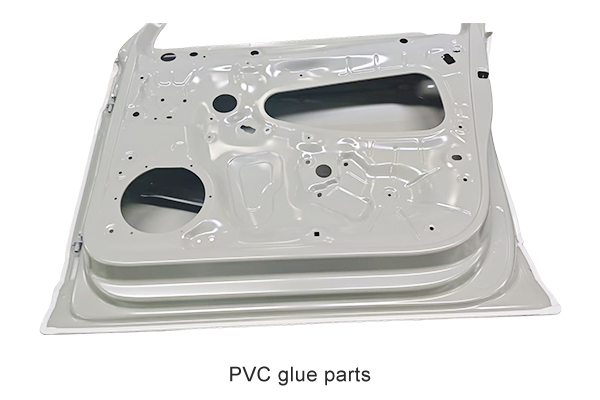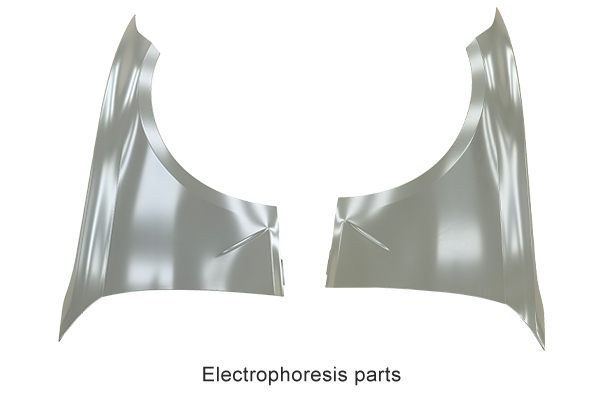How do stamping parts enhance the strength and rigidity of the car body structure in automobile production?
Release Time : 2025-11-11
In modern automobile manufacturing, the safety, lightweighting, and manufacturing efficiency of the car body structure are core design goals. Stamping, as a key step in the manufacturing of the car body-in-white, is widely used in the forming of inner panels, outer panels, and various structural components. Stamping parts not only determine the car body's appearance and assembly precision but also play an irreplaceable role in improving the overall structural strength and rigidity. Through material selection, structural design, and process optimization, stamping parts have become an important foundation for achieving high-safety and high-performance car bodies.
1. Application of High-Strength Materials
With increasingly stringent automotive safety regulations and rising demands for lightweighting, high-strength steel and advanced high-strength steel are widely used in the manufacture of stamping parts. For example, hot-formed boron steel can achieve a tensile strength of over 1500 MPa and is commonly used in critical load-bearing components such as A-pillars, B-pillars, and sill beams. These high-strength stamping parts can effectively absorb and disperse impact energy during a collision, significantly improving the integrity of the passenger compartment and thus enhancing the overall passive safety of the vehicle. Meanwhile, under the same strength requirements, high-strength materials can reduce the thickness of parts, achieving lightweighting without sacrificing structural rigidity.
2. Structural Optimization Design Enhances Rigidity
The geometry of stamping parts directly affects their rigidity. Engineers can significantly improve local and overall rigidity without increasing material usage by designing structural features such as reinforcing ribs, flanges, grooves, or closed sections on parts. For example, door inner panels often use a multi-rib layout to resist lateral impacts and suppress vibration noise; floor beams use U-shaped or hat-shaped cross-section designs to improve bending resistance. Furthermore, modular design concepts integrate multiple small stamped parts into large structural components, reducing the number of weld points, increasing connection rigidity, and further strengthening the overall structural performance of the vehicle body.
3. Precision Forming Processes Ensure Performance Consistency
Advanced stamping processes, such as multi-station progressive dies, servo press forming, and hot stamping technology, ensure high dimensional accuracy, good springback control, and excellent surface quality of parts. In particular, the hot stamping process, through high-temperature austenitization followed by rapid quenching, not only achieves an ultra-high strength microstructure but also effectively controls the forming precision of complex-shaped parts. High-precision stamping parts fit tightly during subsequent welding and assembly, reducing gaps and stress concentration, thereby improving the overall torsional and bending stiffness of the body-in-white. This process stability is crucial for structural consistency in mass production.
4. Synergistic Efficiency with Body Integration Design
Stamping parts do not exist in isolation but are designed collaboratively with the entire body structure. Through CAE simulation analysis, engineers can predict the impact of different stamped parts on body modes, collision paths, and load transfer in the early stages of design, thereby optimizing part layout and connection methods. For example, in the front longitudinal beam area, by rationally arranging the stamped structures of energy-absorbing and rigid zones, the orderly transfer of collision forces can be guided, protecting the passenger compartment. This system-level integrated design allows stamping parts to contribute to the efficient mechanical performance of the entire vehicle structure while improving local strength.
In summary, stamping parts demonstrate significant advantages in enhancing the strength and rigidity of automotive bodies through the application of high-strength materials, structural topology optimization, precision forming processes, and collaborative design with the overall vehicle system. With the continuous development of new materials, new processes, and digital design technologies, stamping parts will continue to play a crucial role in future intelligent electric vehicles, providing solid support for achieving safer, lighter, and higher-performance automotive structures.
1. Application of High-Strength Materials
With increasingly stringent automotive safety regulations and rising demands for lightweighting, high-strength steel and advanced high-strength steel are widely used in the manufacture of stamping parts. For example, hot-formed boron steel can achieve a tensile strength of over 1500 MPa and is commonly used in critical load-bearing components such as A-pillars, B-pillars, and sill beams. These high-strength stamping parts can effectively absorb and disperse impact energy during a collision, significantly improving the integrity of the passenger compartment and thus enhancing the overall passive safety of the vehicle. Meanwhile, under the same strength requirements, high-strength materials can reduce the thickness of parts, achieving lightweighting without sacrificing structural rigidity.
2. Structural Optimization Design Enhances Rigidity
The geometry of stamping parts directly affects their rigidity. Engineers can significantly improve local and overall rigidity without increasing material usage by designing structural features such as reinforcing ribs, flanges, grooves, or closed sections on parts. For example, door inner panels often use a multi-rib layout to resist lateral impacts and suppress vibration noise; floor beams use U-shaped or hat-shaped cross-section designs to improve bending resistance. Furthermore, modular design concepts integrate multiple small stamped parts into large structural components, reducing the number of weld points, increasing connection rigidity, and further strengthening the overall structural performance of the vehicle body.
3. Precision Forming Processes Ensure Performance Consistency
Advanced stamping processes, such as multi-station progressive dies, servo press forming, and hot stamping technology, ensure high dimensional accuracy, good springback control, and excellent surface quality of parts. In particular, the hot stamping process, through high-temperature austenitization followed by rapid quenching, not only achieves an ultra-high strength microstructure but also effectively controls the forming precision of complex-shaped parts. High-precision stamping parts fit tightly during subsequent welding and assembly, reducing gaps and stress concentration, thereby improving the overall torsional and bending stiffness of the body-in-white. This process stability is crucial for structural consistency in mass production.
4. Synergistic Efficiency with Body Integration Design
Stamping parts do not exist in isolation but are designed collaboratively with the entire body structure. Through CAE simulation analysis, engineers can predict the impact of different stamped parts on body modes, collision paths, and load transfer in the early stages of design, thereby optimizing part layout and connection methods. For example, in the front longitudinal beam area, by rationally arranging the stamped structures of energy-absorbing and rigid zones, the orderly transfer of collision forces can be guided, protecting the passenger compartment. This system-level integrated design allows stamping parts to contribute to the efficient mechanical performance of the entire vehicle structure while improving local strength.
In summary, stamping parts demonstrate significant advantages in enhancing the strength and rigidity of automotive bodies through the application of high-strength materials, structural topology optimization, precision forming processes, and collaborative design with the overall vehicle system. With the continuous development of new materials, new processes, and digital design technologies, stamping parts will continue to play a crucial role in future intelligent electric vehicles, providing solid support for achieving safer, lighter, and higher-performance automotive structures.








